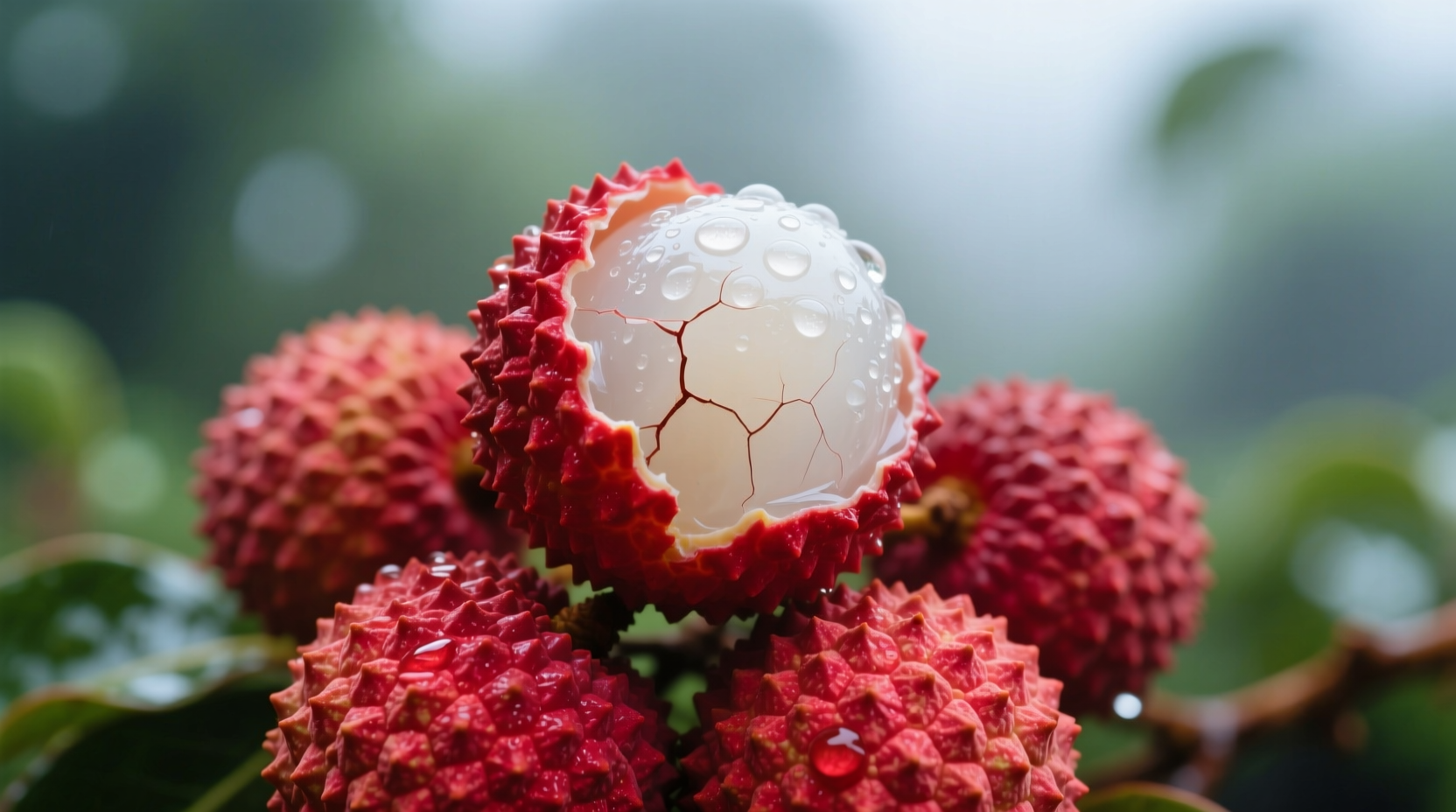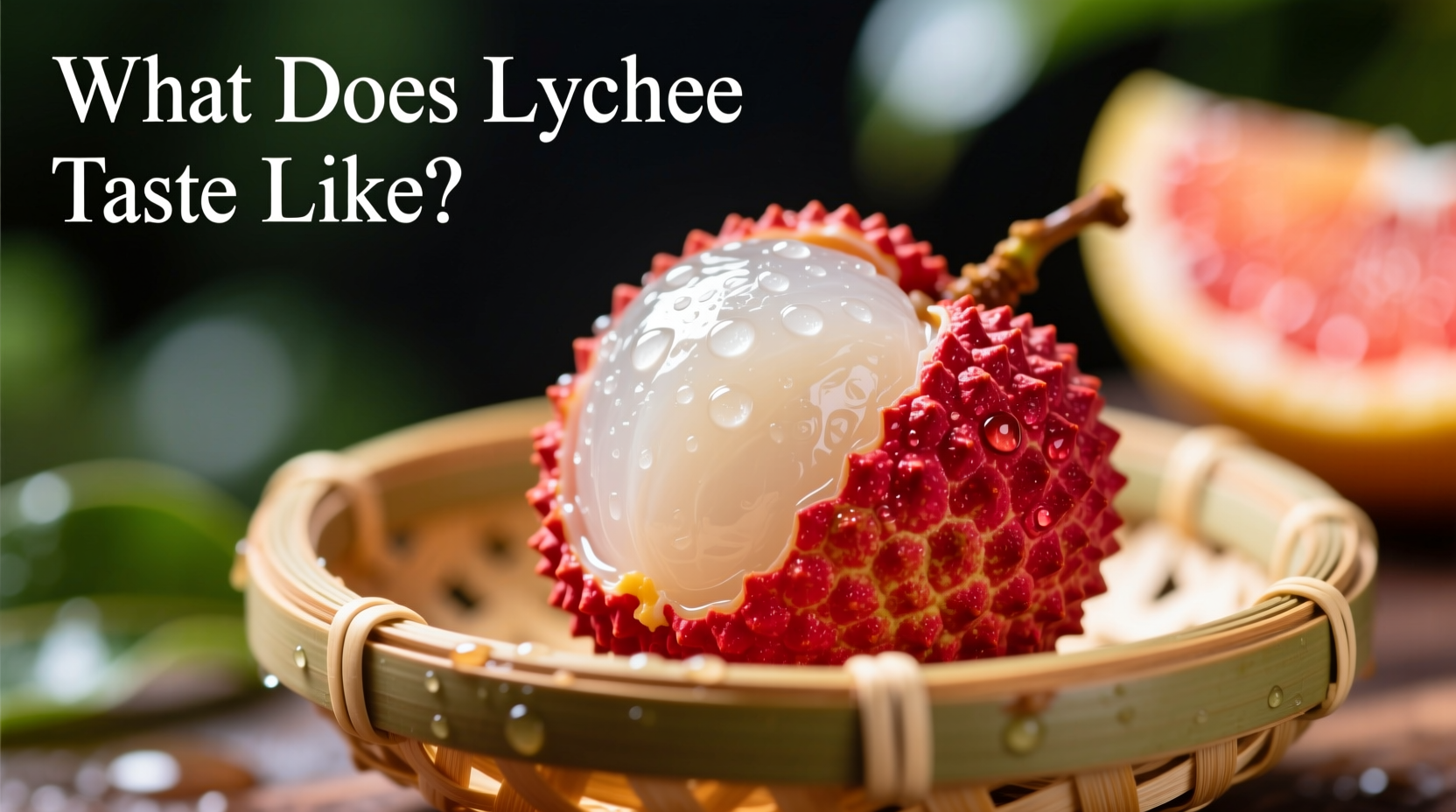Unpacking the Lychee Experience: More Than Just a Tropical Fruit
When you crack open lychee's rough, crimson shell, you're greeted by translucent, jelly-like flesh surrounding a large seed. This Southeast Asian native isn't just visually striking—it offers a complex sensory journey that explains its 2,000-year cultivation history. Unlike predictable supermarket fruits, lychee's flavor shifts dramatically with ripeness, creating distinct tasting experiences that vary from candy-sweet to pleasantly tangy.

Decoding the Flavor Profile: Sweetness, Acidity & Aromatic Notes
Fresh lychee balances three key elements: intense floral sweetness (reminiscent of roses or lychee liqueur), bright citrus acidity (like mandarin orange), and subtle berry notes. The texture plays a crucial role—its firm yet juicy flesh releases flavor gradually, unlike watery fruits. When perfectly ripe, lychee achieves what food scientists call flavor harmony: 18-20% natural sugars tempered by 0.5-0.8% citric acid, creating that signature refreshing finish without cloying sweetness.
How Lychee Compares to Familiar Fruits
| Fruit | Sweetness Level | Distinct Flavor Notes | Texture Comparison |
|---|---|---|---|
| Lychee (ripe) | ★★★★☆ | Rose, grape, citrus | Firm jelly, like firm grape |
| Rambutan | ★★★☆☆ | Soapy, mild grape | Softer, more watery |
| Longan | ★★★☆☆ | Honey, musk | Drier, muscatel grape |
| Strawberry | ★★★☆☆ | Earthy, tart | Fibrous, seedy |
When Flavor Changes: Critical Ripeness Factors
Your lychee tasting experience depends entirely on ripeness—a perfect example of context boundaries in fruit evaluation. According to University of California agricultural research, unripe lychees (UC ANR Publication 8510) contain high levels of organic acids that create unpleasant bitterness. Wait for these visual cues:
- Color shift: From green to bright red (some varieties turn pink)
- Texture test: Slightly yielding to gentle pressure, not rock-hard
- Aroma signal: Distinct floral scent at the stem end
Overripe lychees develop fermented notes within 48 hours of harvest—explaining why imported fruit often disappoints compared to tree-ripened specimens.
Journey Through Time: Lychee's Cultivation Evolution
Lychee's flavor profile has been refined through centuries of selective breeding. Historical records show Emperor Wu of Han (141-87 BCE) demanded fresh lychees from southern China—a luxury requiring relay runners covering 1,000 miles in 10 days. The Food and Agriculture Organization documents how cultivation spread along ancient spice routes (FAO Lychee Monograph), with modern varieties like 'Mauritius' and 'Brewster' developed specifically for balanced sweetness. Unlike wild ancestors with thick shells and minimal flesh, today's commercial lychees prioritize that signature floral-citrus harmony through careful propagation.
Maximizing Your Lychee Experience: Practical Tips
For authentic taste revelation, follow these professional techniques:
- Selection: Choose fruits with intact, unblemished shells—brown spots indicate fermentation
- Peeling: Score the shell with fingernail and pop open (avoid knives to prevent bitter sap contact)
- Timing: Consume within 24 hours of peeling; refrigeration dulls floral notes
- Pairing: Enhance natural flavors with mint or lime zest—never heat, which destroys volatile aromatics
Pro chefs note that lychee's flavor compounds are highly volatile—meaning the aroma you smell when cracking the shell significantly enhances perceived sweetness. This explains why canned lychees (processed at high heat) taste flatter than fresh, losing up to 60% of aromatic terpenes according to postharvest studies.











 浙公网安备
33010002000092号
浙公网安备
33010002000092号 浙B2-20120091-4
浙B2-20120091-4